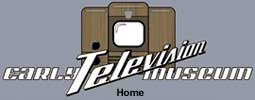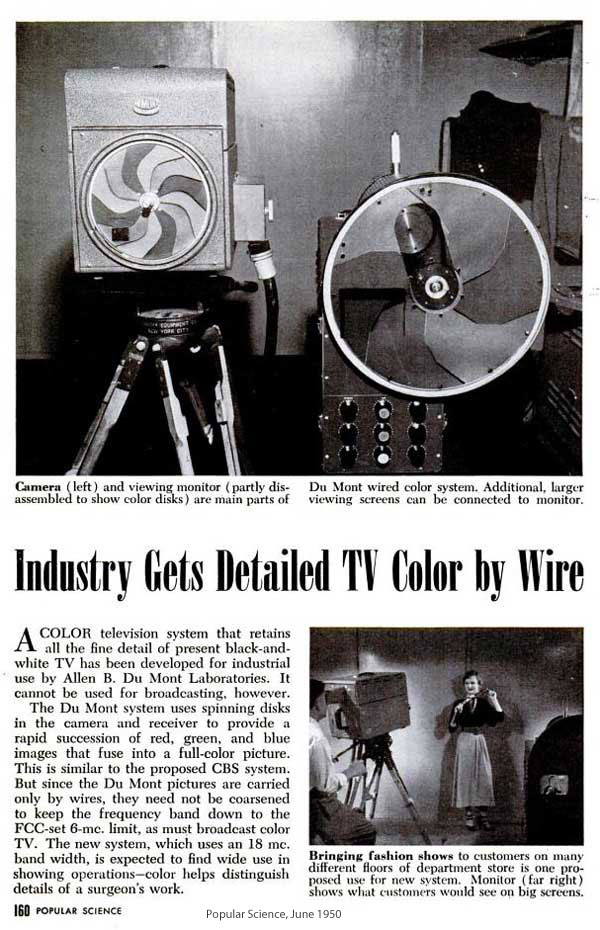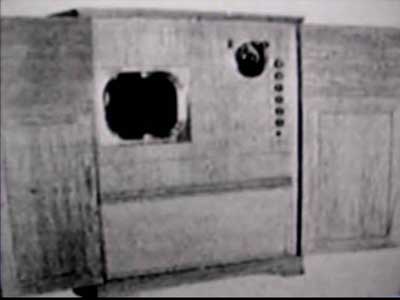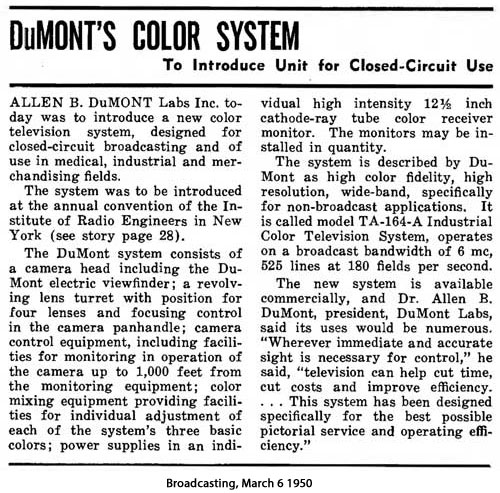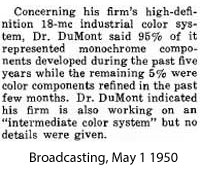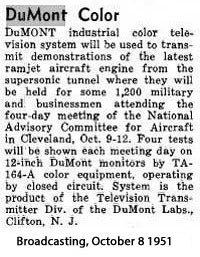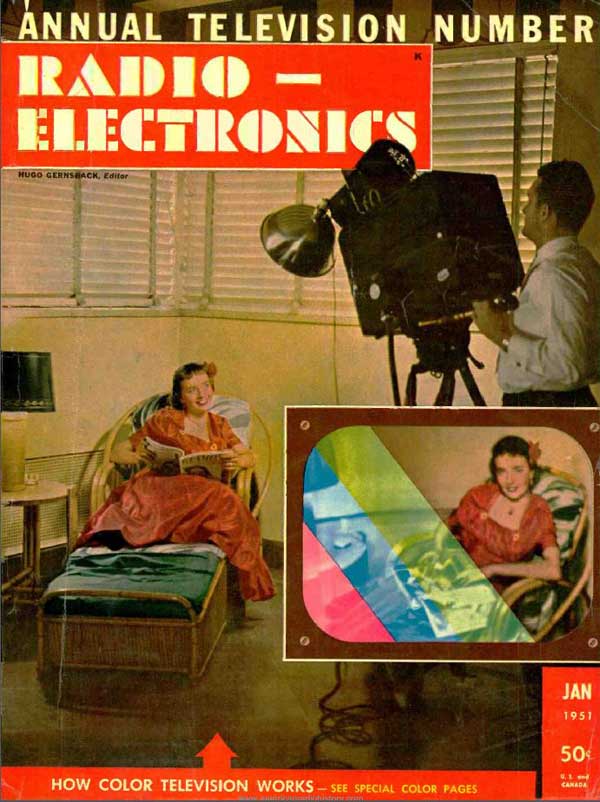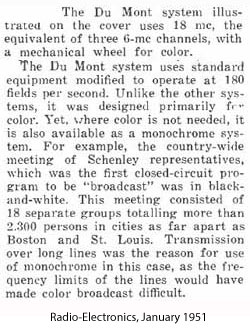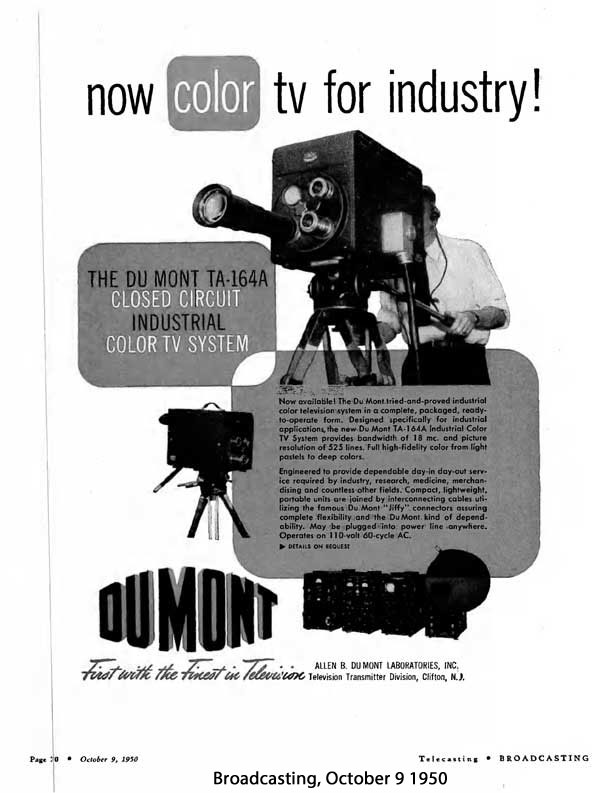Early Color Television DuMont Industrial Color TelevisionThis brochure describes a 1950 field sequential color system developed by DuMont. It operated with 180 fields per second, or 30 frames per second, the same as the NTSC system. It used a bandwidth of 18 mHz, allowing very high resolution, and was designed for closed circuit operation. Here is a brochure. The standard monitor had a 7 inch screen, while a 12 1/2 inch monitor was also available. It was demonstrated at the 1950 IRE show. DuMont had an experimental televison station KE2XDR, which was used for color broadcastin
|
||||||||||||
